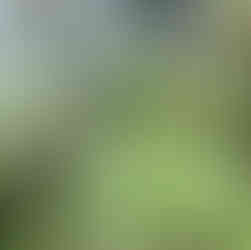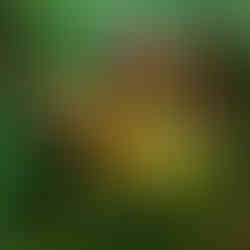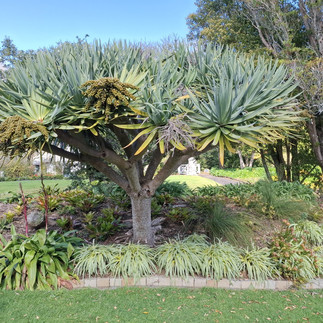
Events Programme December 2025
2nd - Curator’s Walk.
Meet at TSB Carpark (Red gates) 10.30 a.m.
Lead - Joel Richardson - A tour of the new Sports hub completed areas, where they will talk to us about the development and Water Sensitive Design strategies. The meeting place will be TSB stadium car park, meet at the red gates that take you down to the park.
16th - Wanderers’ Walk. Festival of Lights?
Meet at Bellringer Pavilion 10.30 a.m.
Briana Dolan from NPDC will lead us on the behind-the-scenes tour of the Festival of Lights – always a favourite tour!
16th - Committee meeting
25th - Evening Meeting
No Evening Meeting in December
Review of November's Events
November 18th - Wanderers' Walk
Fernery Tour - Lead - Martin Thompson
A select group of 8 joined Martin Thompson and Jasmine on a really interesting tour of The Fernery today.
Martin was keen to share the historical story of The Fernery, starting 1918 when it was first proposed. We tried to imagine digging the tunnels by hand - in typical Taranaki July weather in 1925... just wet and miserable I would imagine.
Our first stop was in House One - the fern house. The main feature is the Prince of Wales fern (see photo), reputed to be around 100 years old and looking stunning, obviously loving his home!
Alan recounted the tale of when the Prince visited the Park on the cricket grounds, 1606 children with pampas plumes, coordinated and arranged these into the shape representative of this fern. It would have been a sight to behold.

Above is a plan of the sportsground from 1920 showing the layout for the visit of the Prince of Wales. On the east terraces girls of the High School spelled out WELCOME, on the south terrace, Technical College students spelled out HRH and on the playing field over 1600 primary school children waving pampas formed the Prince of Wales Feathers emblem.
I also discovered a couple of ponga carvings I hadn't seen before - gloriously covered in moss.
We ventured into House Three - This also was originally ferns but currently displays trees, shrubs, perennials, featuring spring plants (Lillies, Crinum, Hydrangeas Rhodos, Acer, Hosta, Astilbe).
The working area (Staff Only) was explored next . It was especially colourful with the display of plants being weathered and grown to replace displays as summer draws nearer.
The visit was fascinating. The history tracked until 2025 (two months ago) when Martin was appointed. The displays are stunning and it was great to see and hear the processes behind them. What a wonderful team in The Fernery.
Thanks so much.
SUE
November 27th - Evening Meeting
Speaker - Mathew Allen
At November's evening meeting Mathew Allen, guest speaker, enlightened his audience of 18 on the attributes and value of giant bamboo.
Mathew (a close relative of Adrienne Tathams), who has a 23ha stand of a running variety of bamboo, said he has no trouble controlling its spread.
Fascinating to hear how readily it could replace Pinus Radiata (PR), the growth rate of bamboo (a grass) to maturity, 5yrs, compared with PR 25 - 28yrs.
Comparing also the strength - with a high tensile strength comparable to steel and a compressive strength greater than most wood, concrete, and brick, and the versatility, it's composition in construction materials, as good if not better than pinus radiata as well.
The fibres, he likened to fibreglass, but stripped of their sugars, and reduced to a pulp, they make excellent fabrics. Absorbent towels and wonderfully soft underwear.
The edible shoots, the kitchen utensils and "crockery", and don't forget their windbreak value.
Question time was unending, and very lively.
Thank you to Julie Hunt for her generous and delish supper, unfortunately the CAB rooms kitchen was in the process of being updated and a cuppa was not on offer due to no water
Judith
From the Zoo
Tracking Tiny Steps: How Brooklands Zoo Is Enhancing Newt Welfare with ZooMonitor
By Brooklands Zoo Keeper Kelly Green
At Brooklands Zoo, innovation and compassion go hand in hand - especially when it comes to the smallest residents.
The zoo team uses an app called ZooMonitor to track how the animals use their habitats. Starting with the Oriental fire-bellied newts, they recorded daily observations in the app and found that the newts were spending almost all of their time on land within their habitat and only rarely entered the water.
Staff made plans to alter their habitat to have more land available ... until the newts pulled a swifty and started using the water almost constantly!
"We don't know why they changed their behaviour but we've been able to alter our plans so that they have more space to use in water," says Brooklands Zoo Supervisor Max Jenkins.
"If their behaviour changes again, we'll catch it through ZooMonitor and will make any changes that they need."
The team is looking forward to using this technology to monitor the habitat use of other species in the zoo, allowing similar welfare advances.
Friends of Pukekura Park Membership Application Form
To apply for membership, either click on the link to our website page or download a pdf application form
Copyright © 2024 Friends of Pukekura Park, All rights reserved.


































































































































































